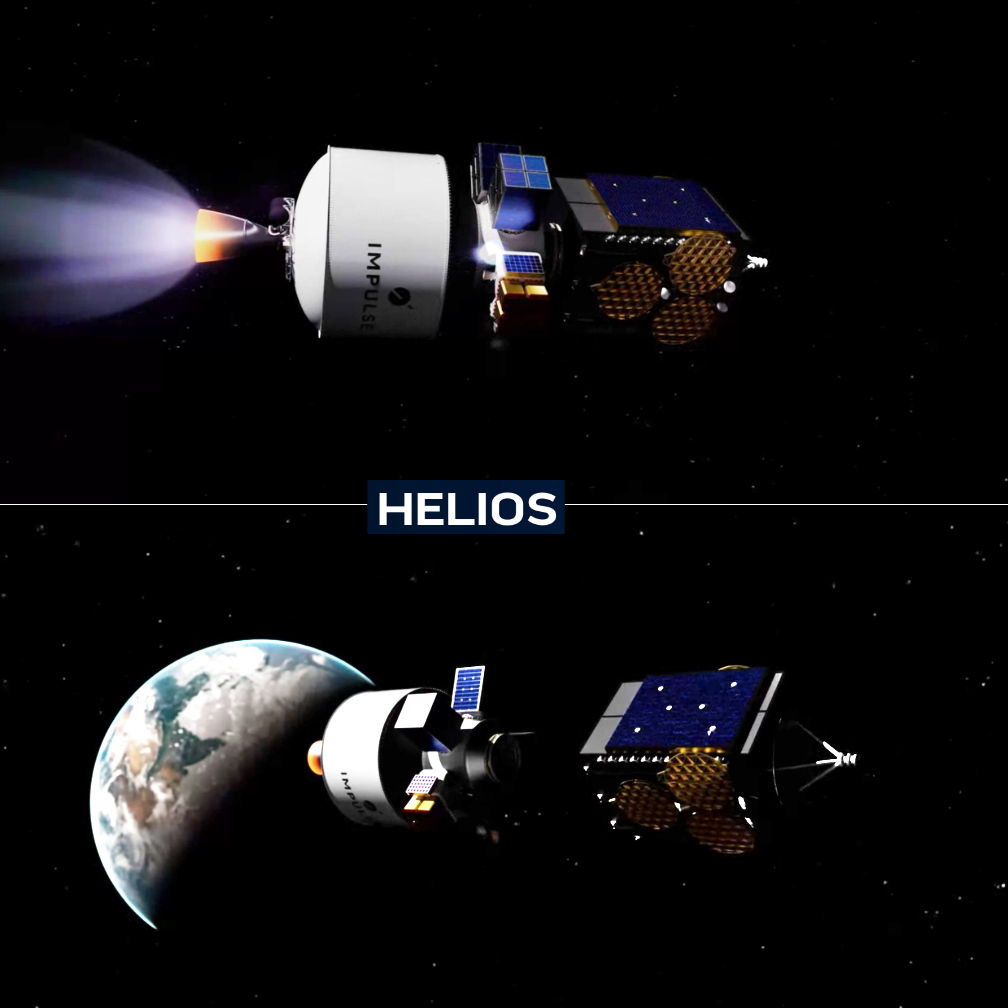
Impulse Space has unveiled design specifications for the company’s latest vehicle: Helios, a high performance kick stage.

Using a medium-lift launch vehicle, Helios is designed to take payloads of over 5 tons directly from LEO to GEO in less than 24 hours. Paired with affordable launches to LEO, Helios aims to dramatically cut the costs of accessing MEO, GEO, and beyond by many tens of millions of dollars.
Compatible with medium-lift and super-heavy launchers, and using standard payload interfaces, Helios is designed to serve customers in the communications, imaging, defense, and scientific communities. Today, the status quo for many satellites launched to LEO is to use electric propulsion to slowly arrive at their target orbit over a period of months; the alternatives are to either include extra propulsion in the satellite itself, complicating the design and increasing mass and cost, or to pay for a much more expensive launch directly to MEO or GEO.
Helios is powered by a new, 15,000 lbf (67 kN) engine, Deneb, which would burn up to 14,000 kg of propellant across each mission. The design and development team includes many veterans of the SpaceX Merlin engine, the most reliable rocket engine in history. Using the nontoxic, high-performance propellant combination of liquid oxygen and liquid methane, the same as Starship and Relativity’s Terran R, Deneb is future-proofed for on-pad operations. Deneb’s first engine test-fires are scheduled for mid-2024, and the first demo launch of Helios is targeted for early 2026.

Helios joins Mira as the second vehicle in Impulse’s fleet—the “long-haul” complement to Mira’s “last-mile delivery” services. Having recently taken Mira from a blank-sheet design to successful operations in space in just 15 months, Impulse has rapidly emerged as a reliable and trusted partner for in-space transportation.
Missions set to benefit from Helios’s high delta-v capabilities include the insertion of GPS satellites into MEO, transferring telecom satellites from LEO to GEO, and placing scientific satellites (such as the James Webb Telescope) into solar orbits. Customers will be able to choose their altitude, inclination, and plane with confidence that Impulse will deliver the payload with precision and timeliness.
“The work done by SpaceX and others to open access to LEO has transformed existing industries and created countless new opportunities for businesses, scientists, and governments,” said Impulse CEO and founder, Tom Mueller. “We firmly believe that extending affordable and reliable access to orbits beyond LEO with Helios will have a similar impact and create new markets.”
“The Helios vehicle unlocks the capability to move from LEO to MEO or GEO in a matter of hours—not days or months, as is currently the norm using conventional orbit raising methods,” said Martin Halliwell, former CTO of SES Satellites. “This changes the mission value proposition significantly in several ways, including decreasing the time to reach operational status, limiting potential radiation exposure, and reducing the overall payload mass by decreasing the size of thrusters and amount of fuel required. Helios will open new opportunities for MEO and GEO operators beyond today’s limited mission choice criteria.”
